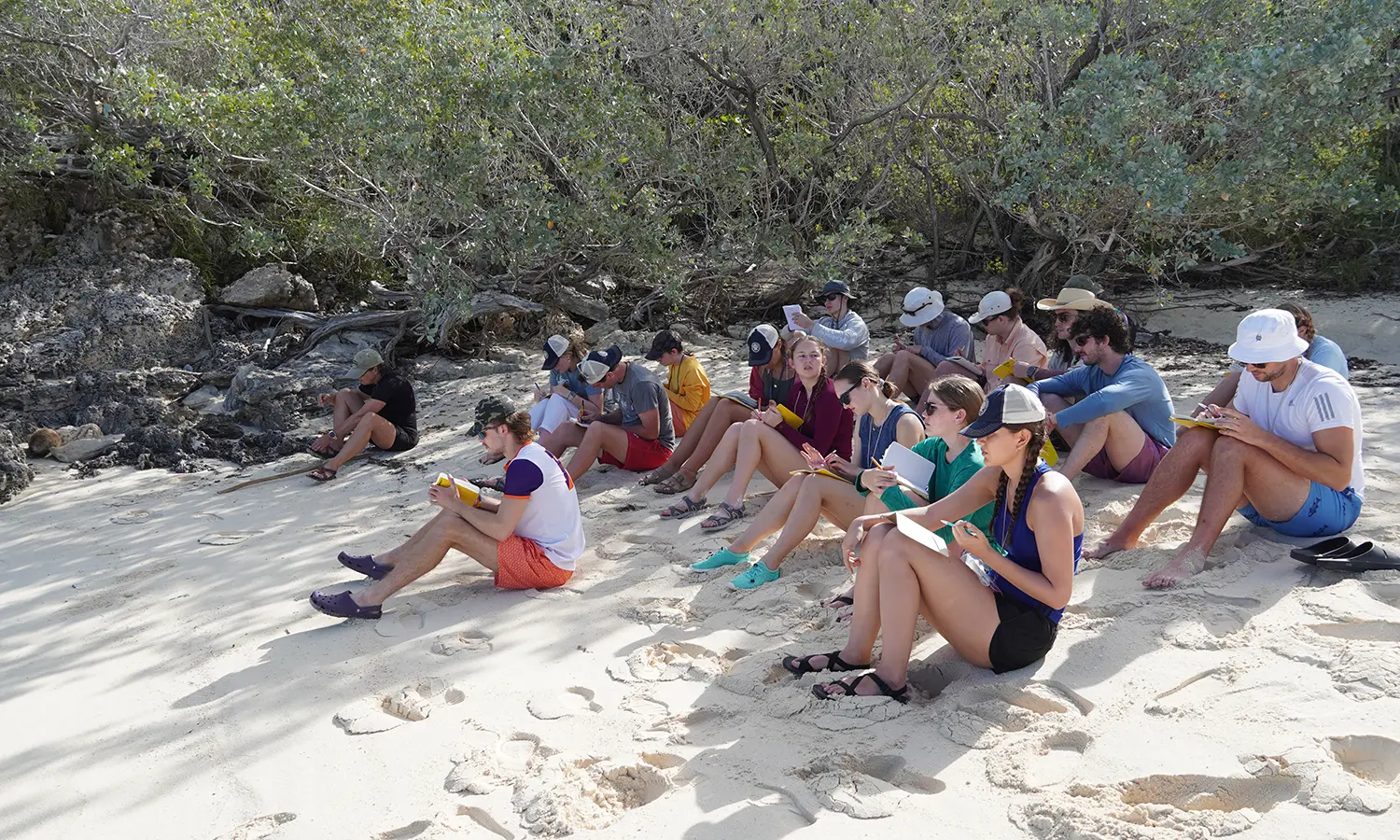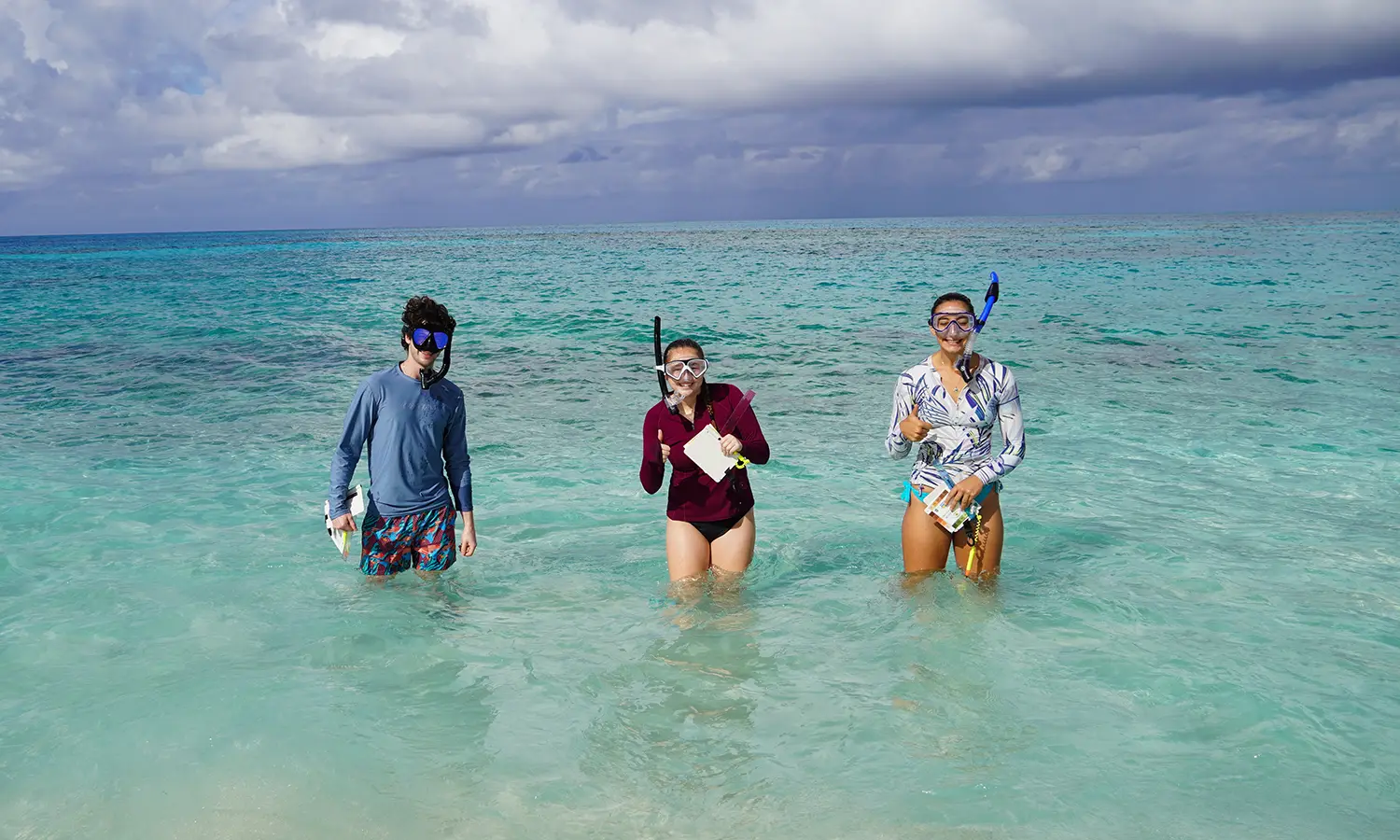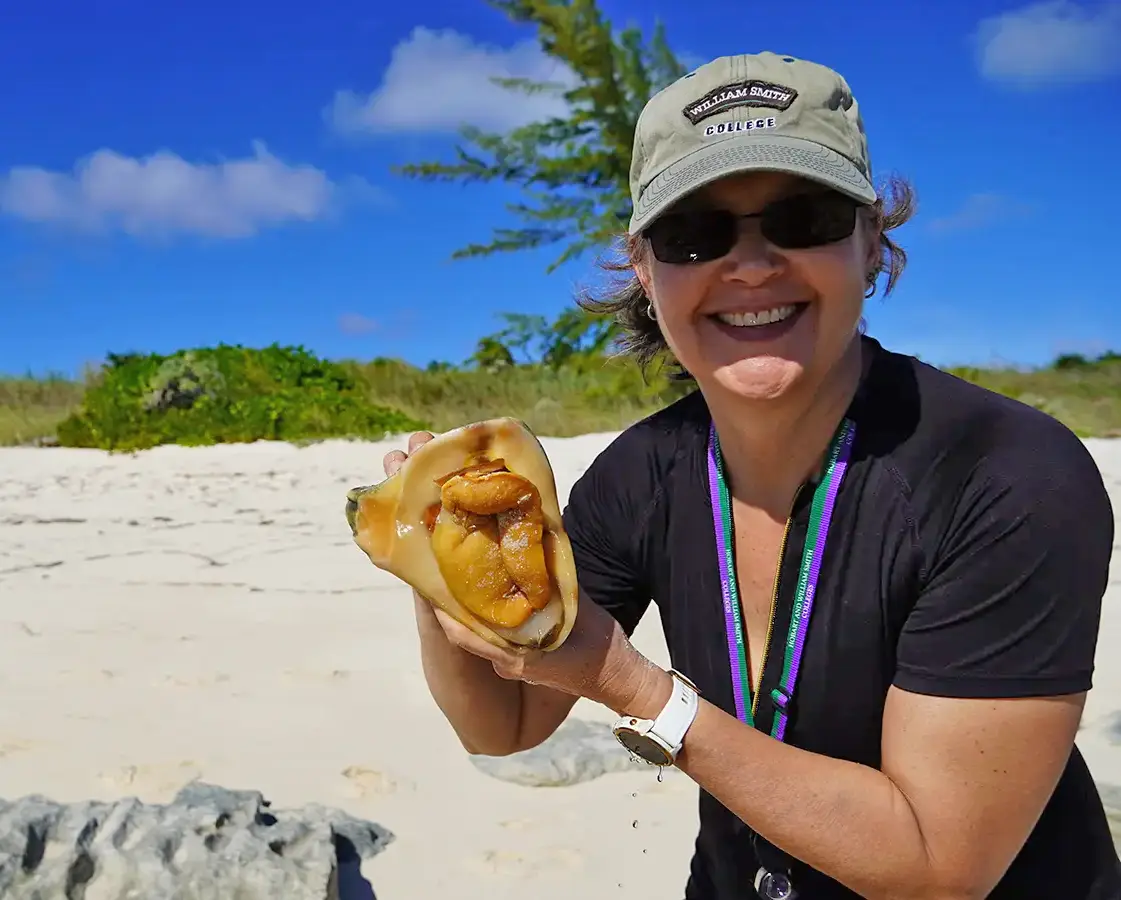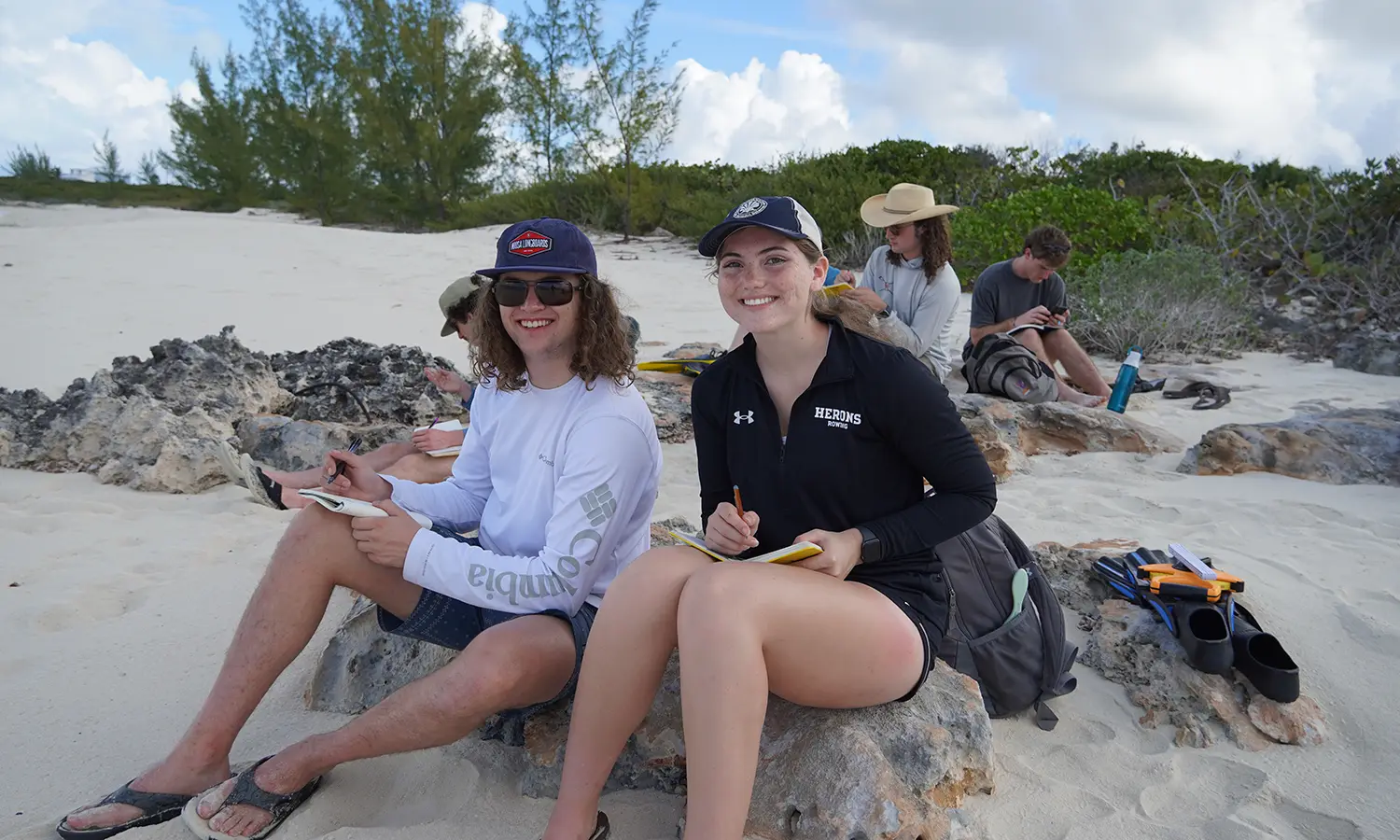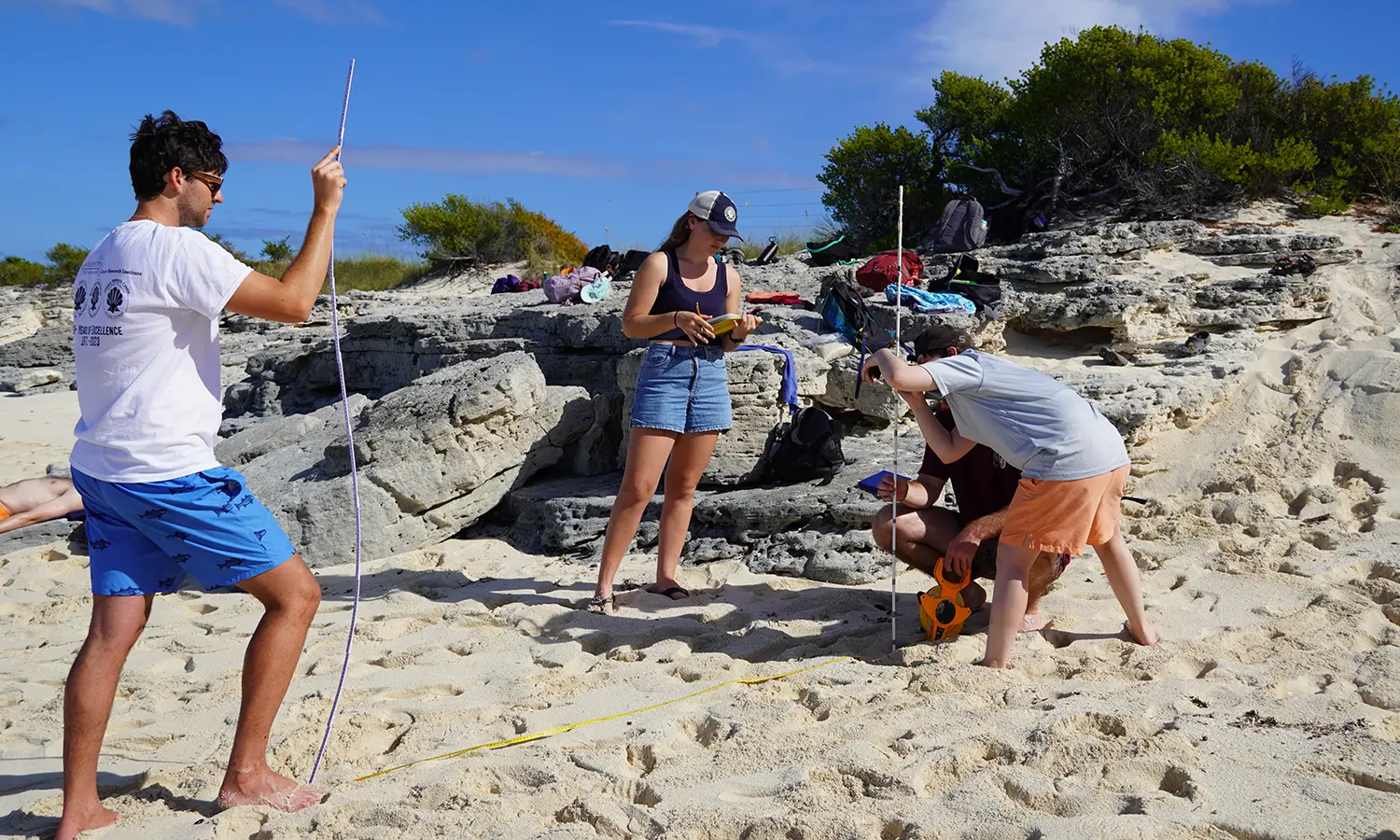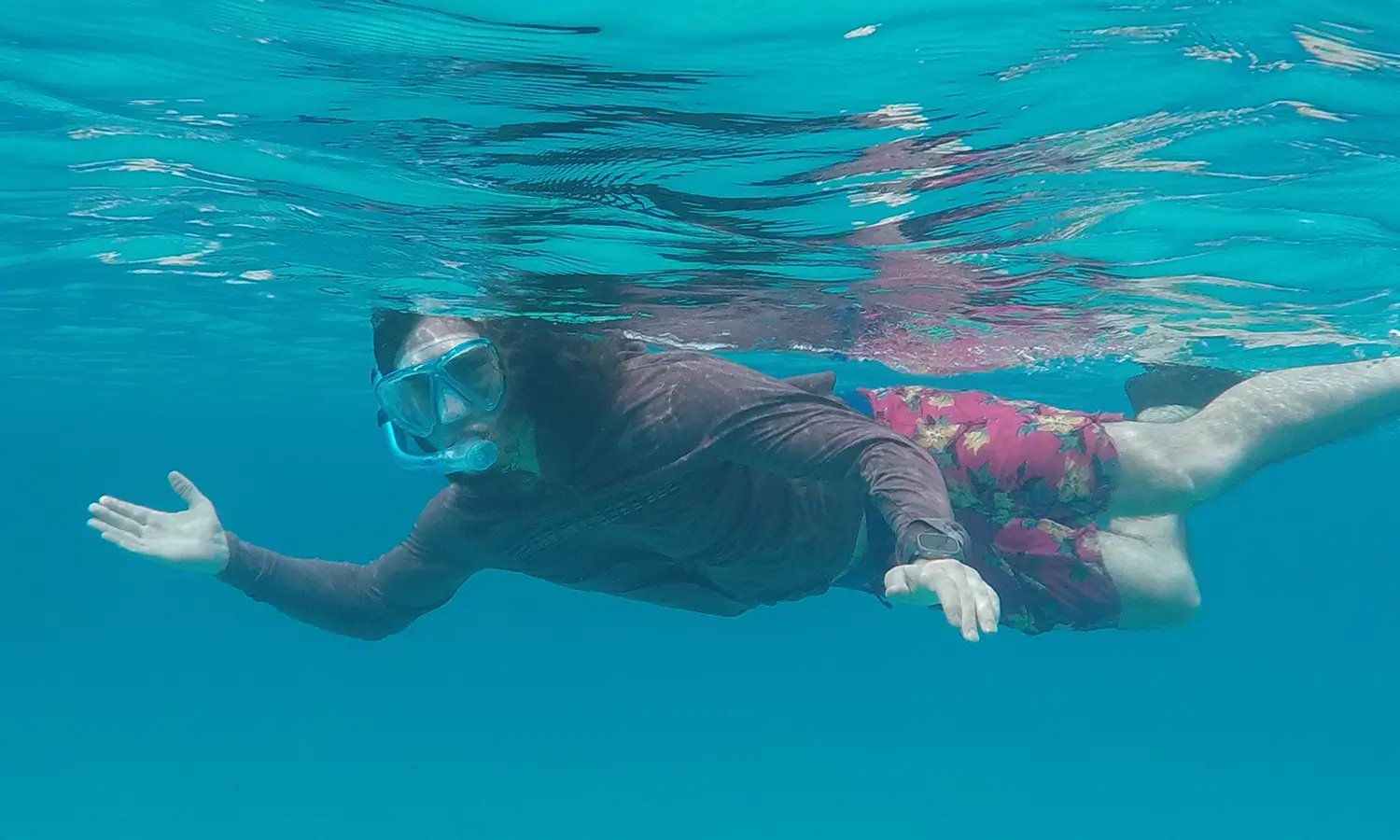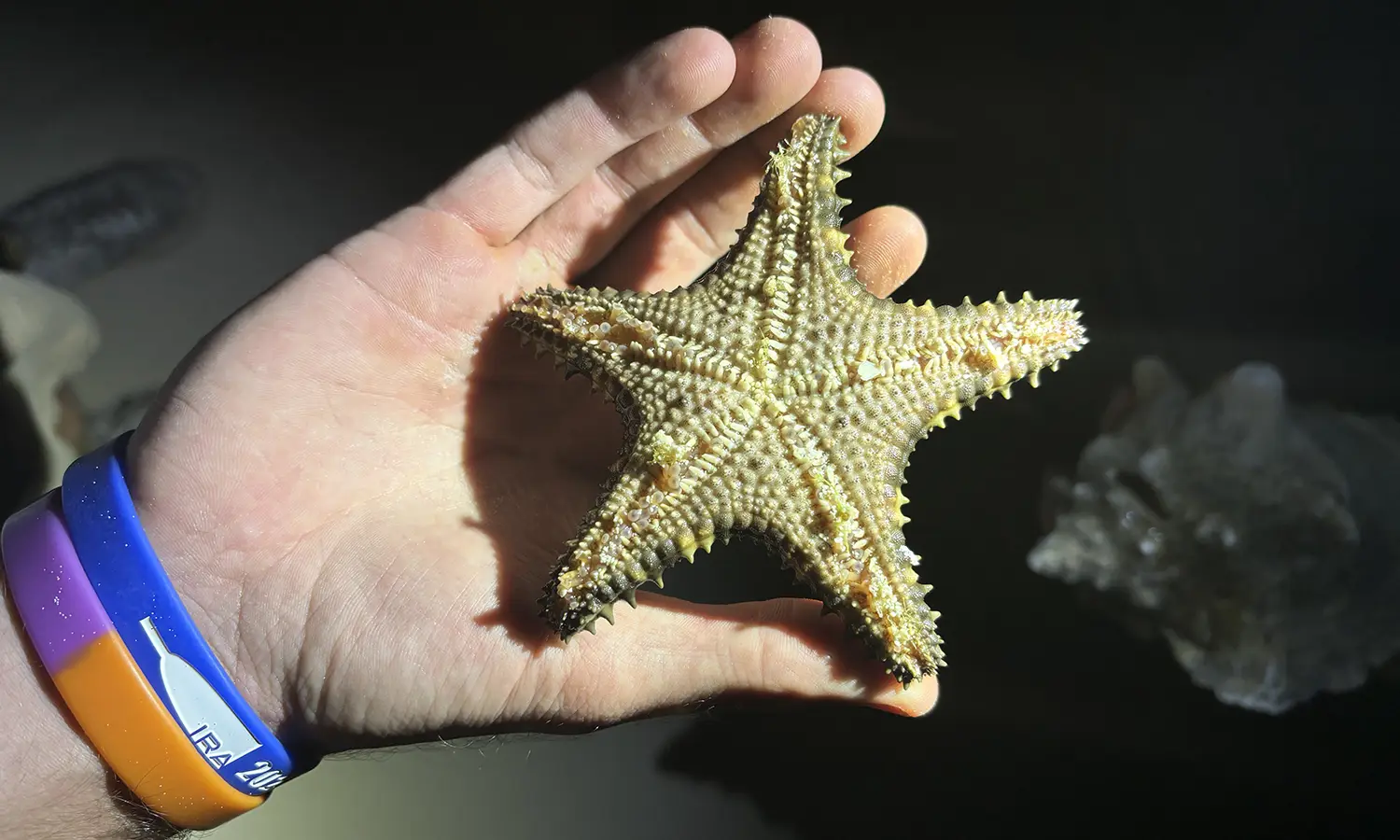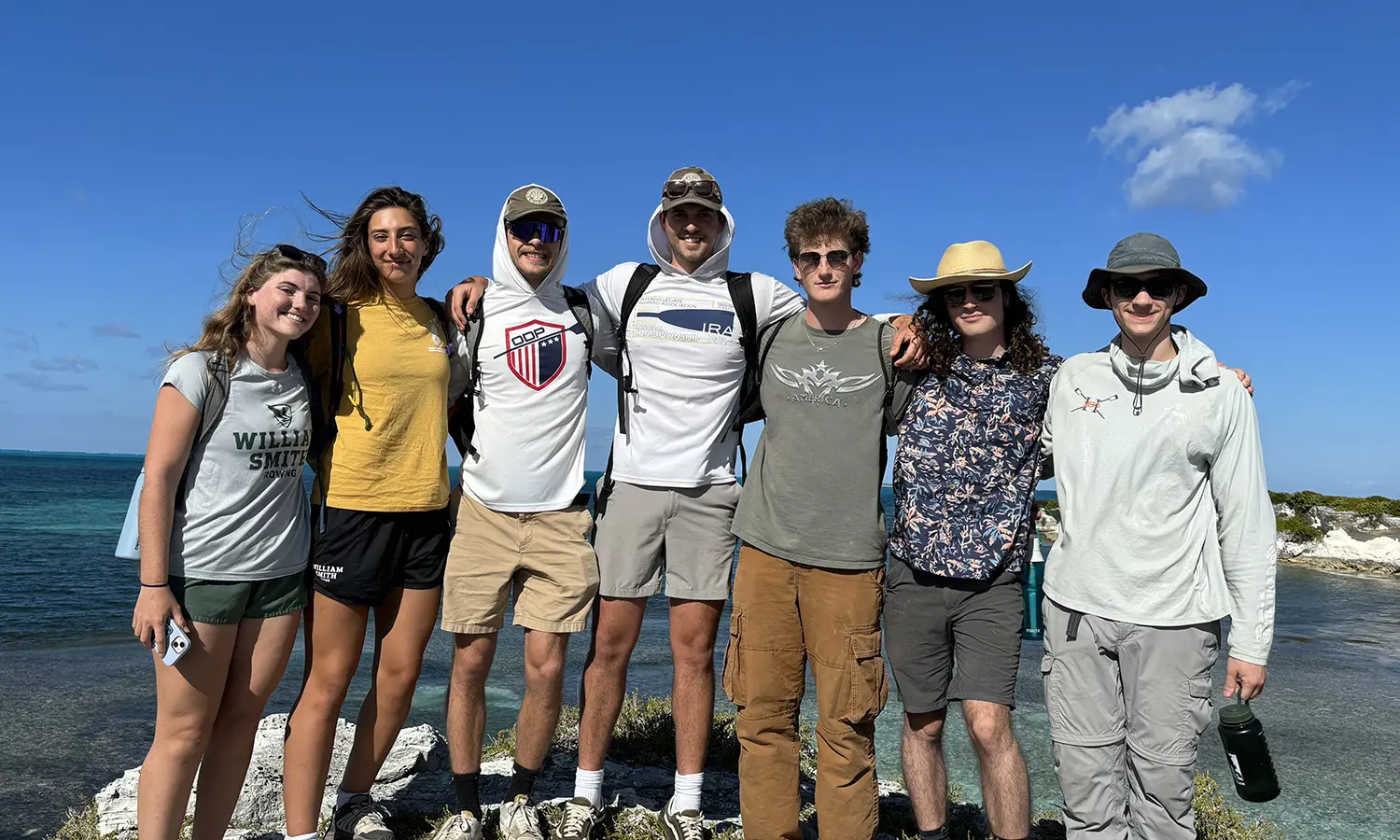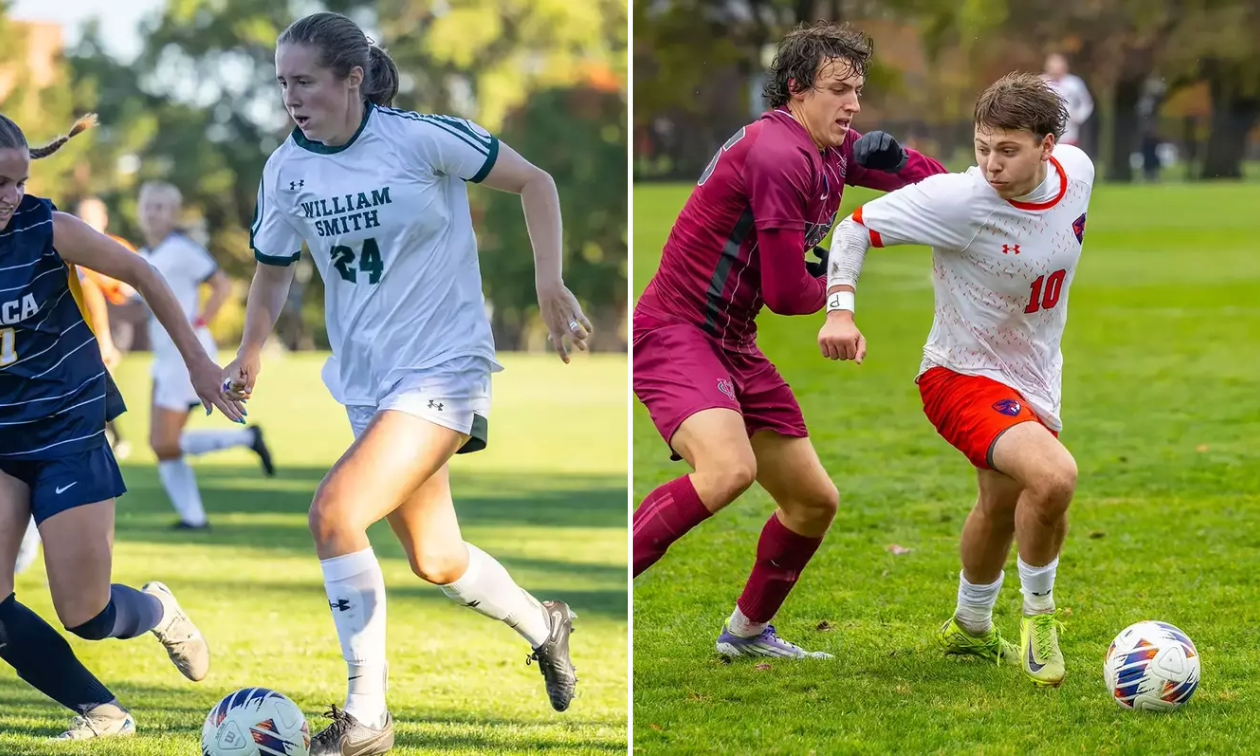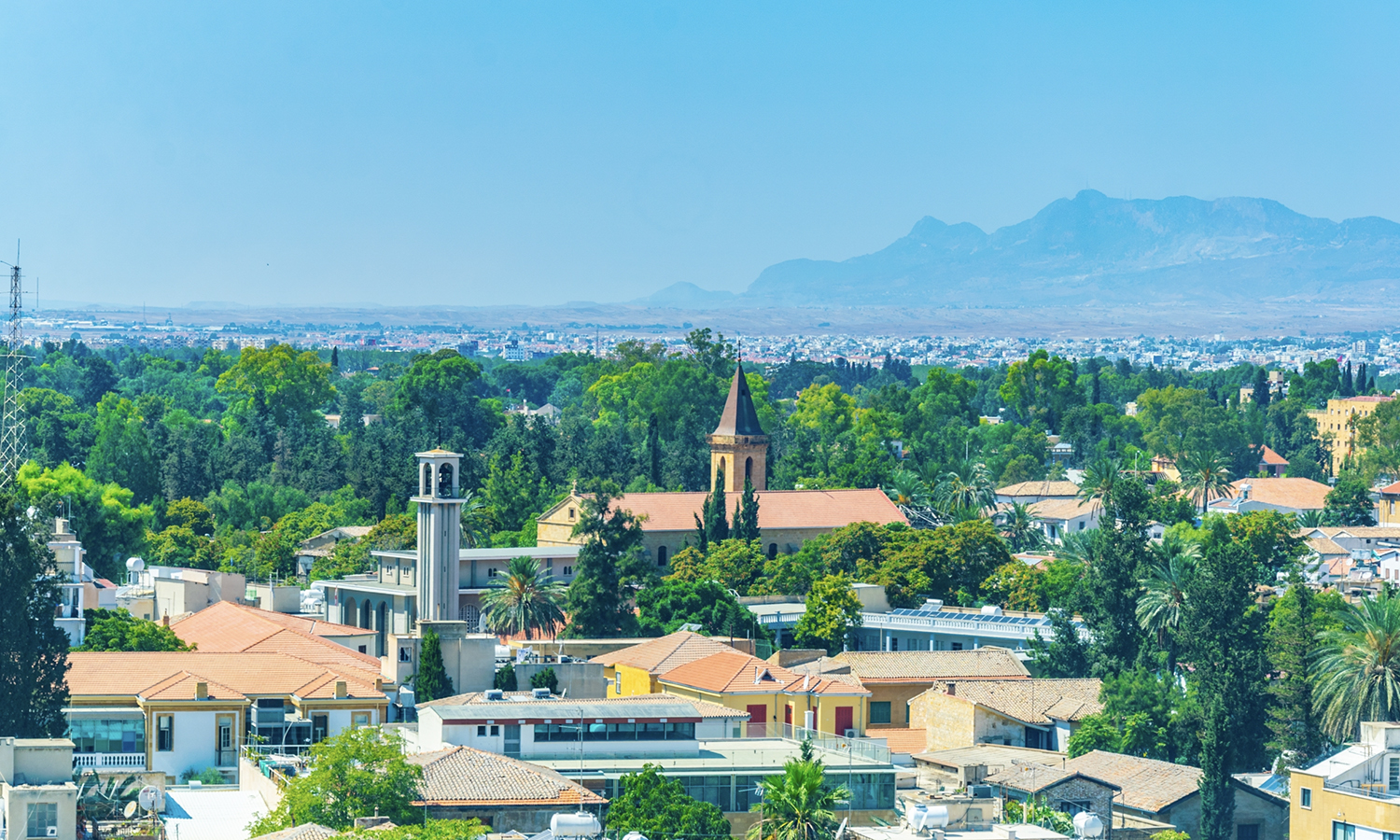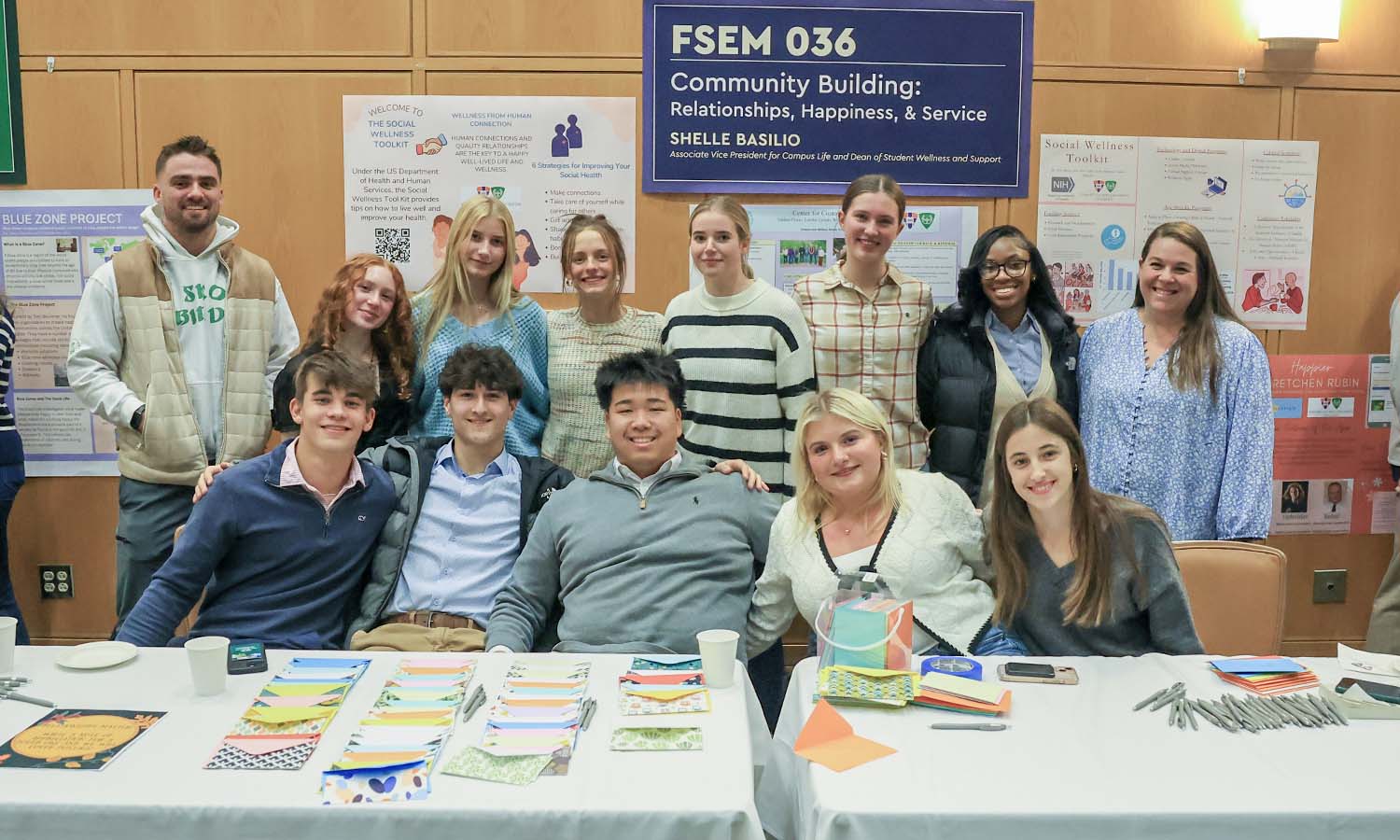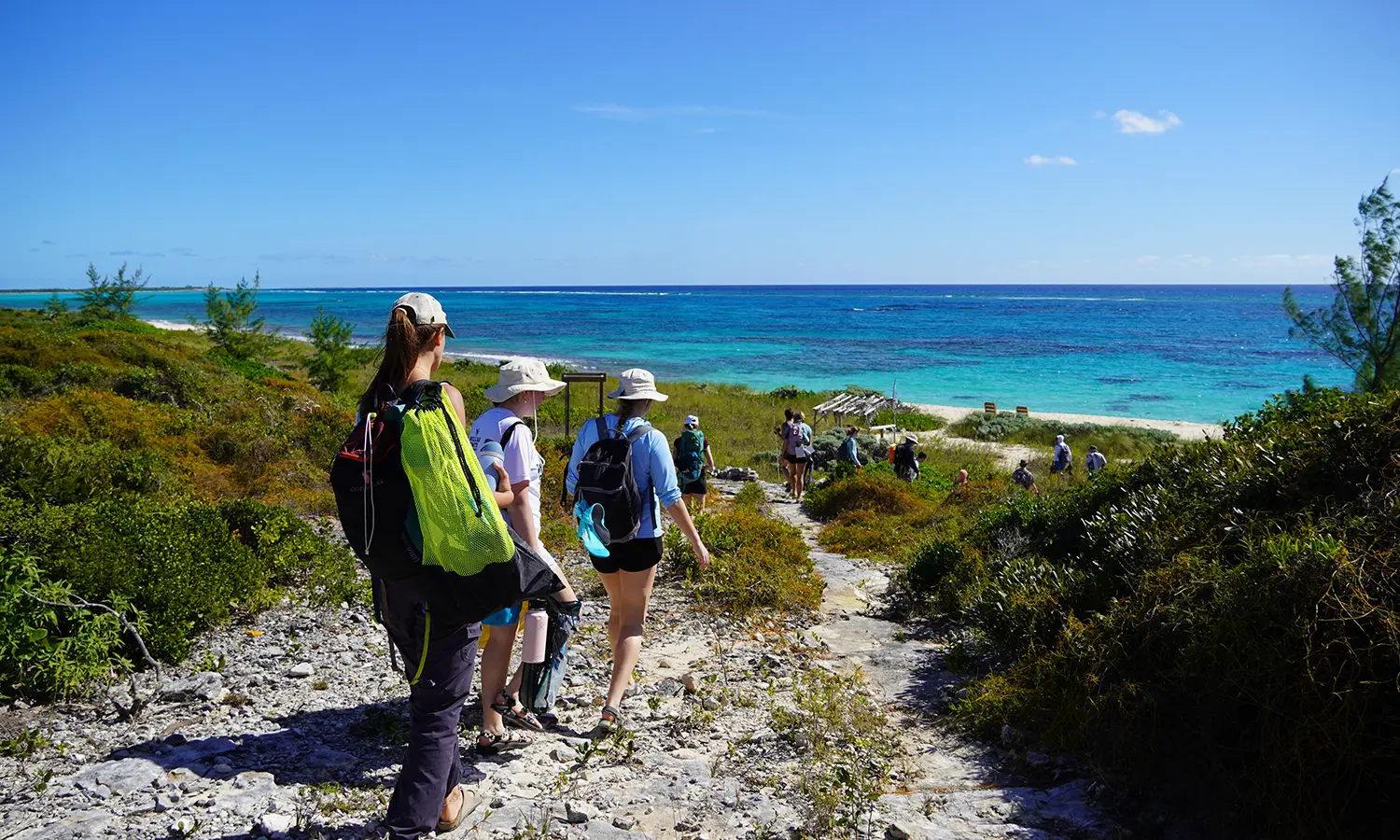
HWS News
12 February 2025 Geology of the Bahamas
Over winter break, students embarked on a transformative study abroad experience in the Bahamas.
Led by Professor of Geoscience Nan Crystal Arens and Winthrop University Professor Diana Boyer, “Geology of the Bahamas” is a three-week course offered over winter break by HWS’ Department of Geoscience.
From San Salvador Island, students explored the biological and geological structure of carbonate bank environments and examined the influence of wind and currents on shaping these habitats. They also grappled with pressing environmental challenges, such as marine plastic pollution, while gaining a deeper appreciation for the rich history and culture of the island.
“Our primary goal is to give students the experience of science in the field,” says Arens. “We ask them to observe, ask questions, design strategies for gathering data, analyze it and think about what it means—all with the joys and limitations of being in a remote and beautiful place.”
Geology of the Bahamas
“This has been such an incredible opportunity because we are able to see and experience things we have only heard about in the classroom,” says Ainsley Innus ’27. “We have also covered a wide range of subjects, from geology and biology, to ecology, history and archaeology. Because of this, and all of the different backgrounds we had going into the course, we had the opportunity to learn so many new things and see how each of these subjects interlock in the field.”
The course, a collaboration between Hobart and William Smith and Winthrop University in Rock Hill, S.C., is designed to be accessible to students from a variety of academic backgrounds.
“Professor Boyer and I work hard to make the course accessible to all of our students so that those with more experience in a particular area can build on those classroom experiences, and novices can jump in and learn from the beginning,” says Arens.
Over the course of the program, students gained experience making and recording observations, developing research questions, collecting and analyzing data, and interpreting results.
For many, the experience also presented a chance to step outside their comfort zones. “The highlight for me was snorkeling at Grotto Beach,” Innus says. “This trip was my first time snorkeling, so it was amazing to see coral reefs in person. At Grotto, the water was so clear, there was a large system of reefs, and I was able to see a large pufferfish, which was so cool.”
In addition to “Geology of the Bahamas,” HWS’ Department of Geoscience offers two- to four- week field experiences including storm chasing in the United States Midwest, and coastal geology studies in the Pacific Northwest.

